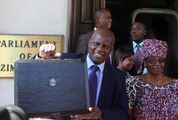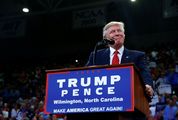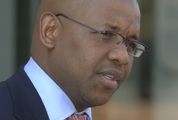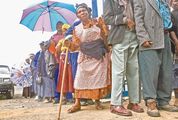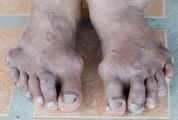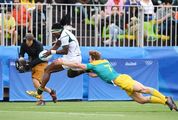ACCORDING to credible sources, Charles, Prince of Wales, will attend Nelson Mandela’s funeral in Qunu this coming Sunday. It is appropriate. The prince, representing his mother, Queen Elizabeth, head of the Commonwealth, represents traditional leadership in one of its grandest forms. At Qunu he will be surrounded by a South African traditional lineage going back centuries.
Charles will do the stuff the politicians in Johannesburg for Tuesday’s Mandela Memorial were too busy to do — take his time. Qunu will be slow and difficult, uncomfortable and hot. He will long ago have acquired the muscle that gets royals through events like this.
But while he is among us may we respectfully suggest that the prince’s staff try to arrange for him a small excursion from Qunu. About an hour’s drive away and across the Mbashe river lies the grave of a Xhosa king called Hintsa, who was most brutally murdered by the British in 1835.
His death still rankles. The British did not often (if ever) kill other kings. For relations between South Africa and the UK, and for race relations inside South Africa, a visit to the grave and a spoken apology would do absolute wonders.
What happened was this.
British settlers in the Eastern Cape clashed frequently with the Xhosa on the other side of the Fish River, sort of where black and white met in South Africa. The settlers were wildly incompetent cattle owners and cattle rustling was common enough for there to be constant tensions on the frontier.
Eventually, under the British governor at the Cape, Sir Benjamin D’Urban, a force was put together to put the Xhosa in their place.
Raiding over the Fish and now beyond the Kei River, they finally caught up with their target — Hintsa. They charged him first with "ingratitude" to the British and for failing to stop Xhosa raiding across the Fish. The prince will appreciate Hintsa’s reply: "It is true I am the great chief of the Xhosa, but it is a mere title. I can’t compel all the Xhosa to do as I wish.
"I can’t restrain them."
He was however forced to agree to "peace" terms (the surrender of cattle) he could not fulfil, and he sent word to leaders back at the frontier that he was a prisoner. When he was unable to produce the cattle he had promised D’Urban and his senior officer, Harry Smith, they took him off to find them.
It was May 12. At some stage during the day Hintsa suddenly urged his horse forward in an effort to escape the column surrounding him. Smith caught up to him and tried to shoot him, but twice his pistols failed. Hintsa meanwhile was trying without success to stab Smith with his spear. Smith eventually threw the king from his horse.
In the melee that followed Smith ordered one of his officers, George Southey, to "shoot, George, and be damned to you". He did. Twice. And twice Hintsa was hit and rose, begging, in isi-Xhosa, for mercy. Southey was fluent and he understood. His third shot shattered Hintsa’s head.
The British quickly removed Hintsa’s jewellery. Both his ears were cut off and one of the army medics was seen trying to remove the king’s teeth. It was arguably the most barbaric moment in more than a hundred years of direct British rule in South Africa.
Sir Harry Smith had fought Napoleon in Spain and it was he who led the British raid on Washington in 1814. It was Harry himself who burned down the White House.
In 2003 British prime minister Tony Blair, speaking to the US Congress, apologised for one of Smith’s great crimes. "I know it’s late," he said, "but sorry."
It would mean more than words can express, and do more good than money can buy, if the Prince of Wales were able to stand for just one minute at Hintsa’s grave, and utter an apology for yet another crime committed by the same man.
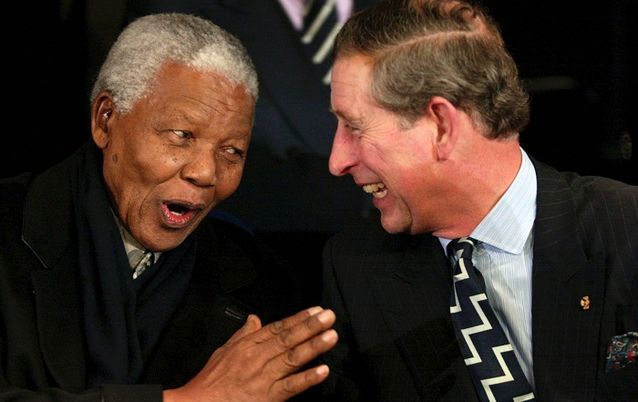
Britain's Prince Charles, right, shares a light moment with Nelson Mandela during a show at the Amsterdam arena, in this February 1, 2002 file photo. Picture: REUTERS
ACCORDING to credible sources, Charles, Prince of Wales, will attend Nelson Mandela’s funeral in Qunu this coming Sunday. It is appropriate. The prince, representing his mother, Queen Elizabeth, head of the Commonwealth, represents traditional leadership in one of its grandest forms. At Qunu he will be surrounded by a South African traditional lineage going back centuries.
Charles will do the stuff the politicians in Johannesburg for Tuesday’s Mandela Memorial were too busy to do — take his time. Qunu will be slow and difficult, uncomfortable and hot. He will long ago have acquired the muscle that gets royals through events like this.
But while he is among us may we respectfully suggest that the prince’s staff try to arrange for him a small excursion from Qunu. About an hour’s drive away and across the Mbashe river lies the grave of a Xhosa king called Hintsa, who was most brutally murdered by the British in 1835.
His death still rankles. The British did not often (if ever) kill other kings. For relations between South Africa and the UK, and for race relations inside South Africa, a visit to the grave and a spoken apology would do absolute wonders.
What happened was this.
British settlers in the Eastern Cape clashed frequently with the Xhosa on the other side of the Fish River, sort of where black and white met in South Africa. The settlers were wildly incompetent cattle owners and cattle rustling was common enough for there to be constant tensions on the frontier.
Eventually, under the British governor at the Cape, Sir Benjamin D’Urban, a force was put together to put the Xhosa in their place.
Raiding over the Fish and now beyond the Kei River, they finally caught up with their target — Hintsa. They charged him first with "ingratitude" to the British and for failing to stop Xhosa raiding across the Fish. The prince will appreciate Hintsa’s reply: "It is true I am the great chief of the Xhosa, but it is a mere title. I can’t compel all the Xhosa to do as I wish.
"I can’t restrain them."
He was however forced to agree to "peace" terms (the surrender of cattle) he could not fulfil, and he sent word to leaders back at the frontier that he was a prisoner. When he was unable to produce the cattle he had promised D’Urban and his senior officer, Harry Smith, they took him off to find them.
It was May 12. At some stage during the day Hintsa suddenly urged his horse forward in an effort to escape the column surrounding him. Smith caught up to him and tried to shoot him, but twice his pistols failed. Hintsa meanwhile was trying without success to stab Smith with his spear. Smith eventually threw the king from his horse.
In the melee that followed Smith ordered one of his officers, George Southey, to "shoot, George, and be damned to you". He did. Twice. And twice Hintsa was hit and rose, begging, in isi-Xhosa, for mercy. Southey was fluent and he understood. His third shot shattered Hintsa’s head.
The British quickly removed Hintsa’s jewellery. Both his ears were cut off and one of the army medics was seen trying to remove the king’s teeth. It was arguably the most barbaric moment in more than a hundred years of direct British rule in South Africa.
Sir Harry Smith had fought Napoleon in Spain and it was he who led the British raid on Washington in 1814. It was Harry himself who burned down the White House.
In 2003 British prime minister Tony Blair, speaking to the US Congress, apologised for one of Smith’s great crimes. "I know it’s late," he said, "but sorry."
It would mean more than words can express, and do more good than money can buy, if the Prince of Wales were able to stand for just one minute at Hintsa’s grave, and utter an apology for yet another crime committed by the same man.



